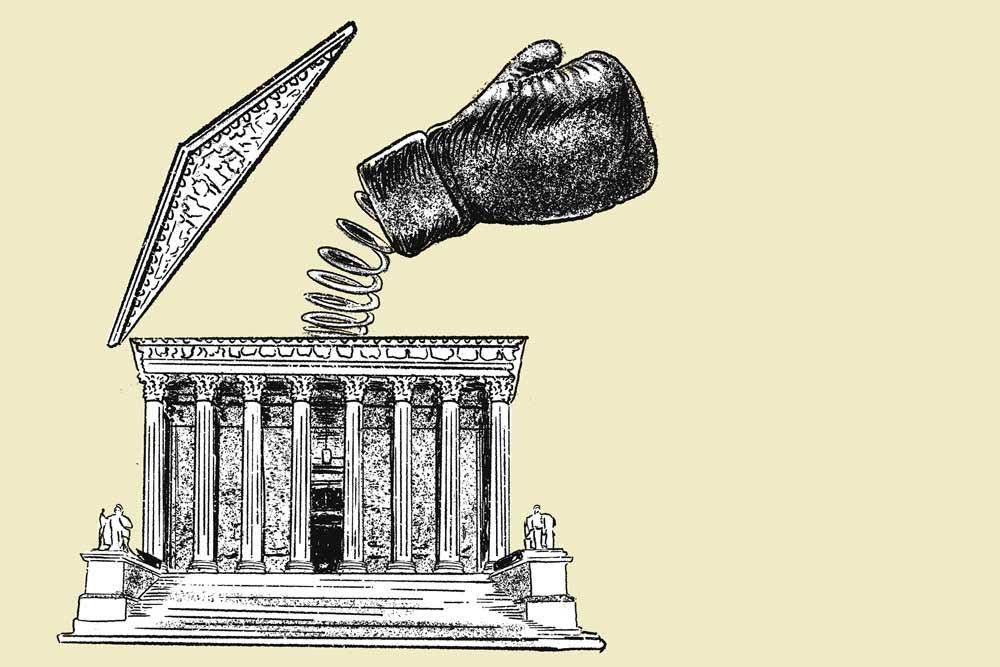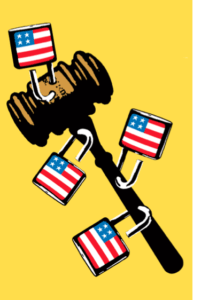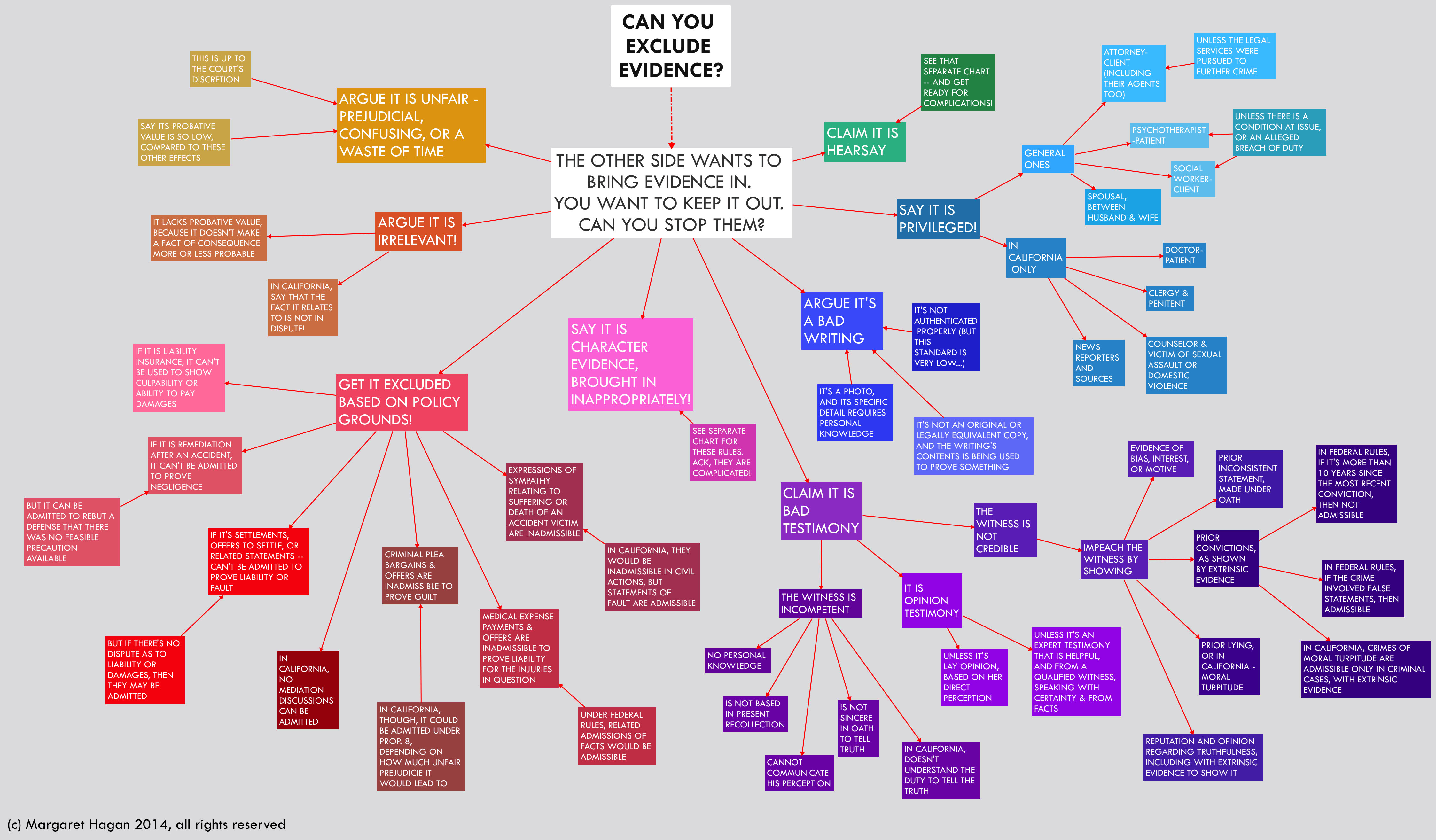Good News For Grandparents
Third “PRESUMED PARENT” Family Code 7612(C) –
Requires Established Relationship Required
New Non-Dependency Caselaw
Family Code 7612(c)
California is one of the only states that provides and protects a third parent’s right to parent under certain circumstances. Non-traditional relationships, platonic parenting, grandparents involved in children’s lives, and polyamorous relationships are more common than ever making a need for a third parent recognition.
In 2013, California enacted Family Code Section 7612(c) “three-parent” law, which provides a child may have a parent-child relationship with more than two parents. The statute allows for the recognition of non-biological parents in addition to biological parents.
Download a PDF about Psychological Parentage, Troxel, and the Best Interests of the Child.
Download a good PDF to read about Three Parent Law –
The State Bar of California family law news issue4 2017 vol. 39, no. 4.pdf
M.M. V. D.V.
Published 7/19/21; Fourth Dist., Div. One. Docket No. D077468
In re M.C. (2011) 195 Cal.App.4th 197
In 2013, California enacted Family Code §7612(c), a groundbreaking law, which provides that a child may have a parent-child relationship with more than two parents. Prior to the enactment of the new “three parent law,” a biological parent had to terminate his or her rights before a non-biological parent could be legally recognized as a parent. By removing the two parent legal limitation, the new law allows for, among other things, the recognition of non-biological parents in addition to two biological parents.
Family Code §7612(c) permits the recognition of more than two parents in cases where “recognizing only two parents [i.e., biological parents] would be detrimental to the child.” In deciding whether to recognize more than two parents for a child, the Court will consider all relevant factors, including the harm of removing the child from a stable placement with a parent who has fulfilled the child’s physical needs and psychological needs for care and affection, and who has assumed that role for a substantial period of time. (Family Code §7612(c)).
The law was enacted in the wake of the California Court of Appeal’s ruling in the complex and heartbreaking case In re M.C. (2011) 195 Cal.App.4th 197. In that case, the child was placed into foster care after her biological mother, and the only parent listed on the child’s birth certificate, was incarcerated. The child’s biological father was virtually absent from the child’s life in a different state, and was not a presumed parent under the law because the parents were never married. The child’s court appointed counsel sought to keep the child out of foster care by arguing that the child had an additional parent: the biological mother’s same-sex partner who was married to the biological mother at the time the child was born. Although the Court was sympathetic to the need for a change in the parentage law, it concluded that the legislature would have to move first. As a result, the child was left in foster care. Fortunately, the legislature responded to the Court’s invitation to change the law so that similar tragedies need not be repeated. https://www.boydlawlosangeles.com/boyd-law-successfully-achieves-one-of-californias-first-rulings-under-new-three-parent-law/
THE EXISTENCE OF AN ESTABLISHED PARENT-CHILD RELATIONSHIP IS REQUIRED TO QUALIFY AS A THIRD “PRESUMED PARENT” UNDER FAMILY CODE 7612(C).
In re M.C. (2011) 195 Cal.App.4th 197
Mother was in a relationship with two men, M.M. and T.M., at the same time. When she discovered she was pregnant, mother told M.M. that he could not be the father based on the timing of conception. When the child was born, T.M. signed a voluntary declaration of parentage and was listed as the father on the birth certificate. T.M. and mother then married. When the child was 2½ years old, DNA testing determined M.M. to be the biological father. Mother allowed M.M. to meet with the child for a brief time but then cut off contact because she thought it would be “confusing and traumatizing” to introduce a stranger into the child’s life. M.M. filed a petition to be declared a third presumed parent within the meaning of Family Code 7612(c). However, M.M. also argued that he should be accorded “presumed father” status as a Kelsey S.-father because mother, by denying him access to the child, had prevented him from establishing himself as presumed father. M.M. testified he would have assumed his obligations had he known the child was his, but acknowledged he never paid nor offered to pay child support.
Affirmed. Family Code 7612(c) allows a third presumed parent-finding “if the court finds that recognizing only two parents would be detrimental to the child.” Because only a person “with a claim to parentage” is eligible to be a third parent, the person must first show that he or she qualifies to be a presumed parent – a status which is based on familial relationship rather than any biological connection. Moreover, this parent-child relationship must be shown before determining whether recognition of only two parents would be detrimental to the child. Here, M.M. neither qualified as a Kelsey S.-presumed father (having failed to show a full commitment to his parental responsibilities) nor a presumed parent under the definitions listed in 7611. Lastly, even if M.M. had qualified as a presumed parent, this was not an “appropriate action” in which to find a child has more than two parents. Legislative history shows this provision was intended to be narrow in scope and apply only in “rare cases” in which a child “truly has more than two parents” who are parents “in every way.” Accordingly, an “appropriate action” for application of 7612(c) is one in which there is an existing parent-child relationship between the child and the putative third parent such that recognizing only two parents would be detrimental to the child. Here, M.M. had the burden to show an existing meaningful relationship between the parent and the child, but none existed between him and the child. (ML)
cited https://www.clccal.org/blog/dependency-legal-news-vol-17-no-6/
2017 California Code
Family Code – FAM
DIVISION 12 – PARENT AND CHILD RELATIONSHIP
PART 3 – UNIFORM PARENTAGE ACT
CHAPTER 2 – Establishing Parent and Child Relationship
Section 7612.
7612.
- (a) Except as provided in Chapter 1 (commencing with Section 7540) and Chapter 3 (commencing with Section 7570) of Part 2, a presumption under Section 7611 is a rebuttable presumption affecting the burden of proof and may be rebutted in an appropriate action only by clear and convincing evidence.
- (b) If two or more presumptions arise under Section 7610 or 7611 that conflict with each other, or if a presumption under Section 7611 conflicts with a claim pursuant to Section 7610, the presumption which on the facts is founded on the weightier considerations of policy and logic controls.
- (c) In an appropriate action, a court may find that more than two persons with a claim to parentage under this division are parents if the court finds that recognizing only two parents would be detrimental to the child. In determining detriment to the child, the court shall consider all relevant factors, including, but not limited to, the harm of removing the child from a stable placement with a parent who has fulfilled the child’s physical needs and the child’s psychological needs for care and affection, and who has assumed that role for a substantial period of time. A finding of detriment to the child does not require a finding of unfitness of any of the parents or persons with a claim to parentage.
- (d) Unless a court orders otherwise after making the determination specified in subdivision (c), a presumption under Section 7611 is rebutted by a judgment establishing parentage of the child by another person.
- (e) Within two years of the execution of a voluntary declaration of paternity, a person who is presumed to be a parent under Section 7611 may file a petition pursuant to Section 7630 to set aside a voluntary declaration of paternity. The court’s ruling on the petition to set aside the voluntary declaration of paternity shall be made taking into account the validity of the voluntary declaration of paternity, the best interests of the child based upon the court’s consideration of the factors set forth in subdivision (b) of Section 7575, and the best interests of the child based upon the nature, duration, and quality of the petitioning party’s relationship with the child and the benefit or detriment to the child of continuing that relationship. In the event of a conflict between the presumption under Section 7611 and the voluntary declaration of paternity, the weightier considerations of policy and logic shall control.
- (f) A voluntary declaration of paternity is invalid if, at the time the declaration was signed, any of the following conditions exist:
- (1) The child already had a presumed parent under Section 7540.
- (2) The child already had a presumed parent under subdivision (a), (b), or (c) of Section 7611.
- (3) The man signing the declaration is a sperm donor, consistent with subdivision (b) of Section 7613.
- (g) A person’s offer or refusal to sign a voluntary declaration of paternity may be considered as a factor, but shall not be determinative, as to the issue of legal parentage in any proceedings regarding the establishment or termination of parental rights.
(Amended by Stats. 2016, Ch. 86, Sec. 129. (SB 1171) Effective January 1, 2017.)
A Washington state law gave any person the ability to override a good parent’s decision about visitation by simply claiming that it would be “best” for children to allow the third-party to have visitation rights. When the U.S. Supreme Court reviewed the law in Troxel v. Granville, 530 U.S. 57 (2000):
Third parties who seek visitation with children should not be required to show that the lack of visitation would affirmatively harm the child. Once further proceedings had unfolded in state court under that adjusted standard, the Court could return to any federal questions that might arise later, such as whether the statute failed to protect the parent’s rights sufficiently.
The burden is on the grandparents to show that mother is acting purely out of spite and in a way that is clearly harmful to the children. If the judge, after reviewing all the evidence, concludes that in this case there has been ‘‘an arbitrary exercise of parental authority that is not in fact motivated by an interest in the welfare of the child,’’ it is constitutionally permissible for the judge to order that the grandparents have some visitation with their grandchildren.
What was the effect of Troxel vs Granville?
- The court did not find that visitation laws are unconstitutional.
- Third-party petitioners are still allowed in every state to seek visitation rights.
- Many states only consider visitation rights by third parties to be a minor burden on parents right to have control of the upbringing of their children.
- After the Troxel case, many states now place great weight on what a fit parent’s decision is regarding what is best for their child when deciding whether to grant visitation rights, especially grandparent visitation rights.
In 2013, California enacted Family Code §7612(c), a groundbreaking law, which provides that a child may have a parent-child relationship with more than two parents. Prior to the enactment of the new “three parent law,” a biological parent had to terminate his or her rights before a non-biological parent could be legally recognized as a parent. By removing the two parent legal limitation, the new law allows for, among other things, the recognition of non-biological parents in addition to two biological parents.
Family Code §7612(c) permits the recognition of more than two parents in cases where “recognizing only two parents [i.e., biological parents] would be detrimental to the child.” In deciding whether to recognize more than two parents for a child, the Court will consider all relevant factors, including the harm of removing the child from a stable placement with a parent who has fulfilled the child’s physical needs and psychological needs for care and affection, and who has assumed that role for a substantial period of time. (Family Code §7612(c)).
The law was enacted in the wake of the California Court of Appeal’s ruling in the complex and heartbreaking case In re M.C. (2011) 195 Cal.App.4th 197. In that case, the child was placed into foster care after her biological mother, and the only parent listed on the child’s birth certificate, was incarcerated. The child’s biological father was virtually absent from the child’s life in a different state, and was not a presumed parent under the law because the parents were never married. The child’s court appointed counsel sought to keep the child out of foster care by arguing that the child had an additional parent: the biological mother’s same-sex partner who was married to the biological mother at the time the child was born. Although the Court was sympathetic to the need for a change in the parentage law, it concluded that the legislature would have to move first. As a result, the child was left in foster care. Fortunately, the legislature responded to the Court’s invitation to change the law so that similar tragedies need not be repeated.
This new law has application in several areas of family law, including: 1) the parentage of non-biological parents; 2) situations where existing parents are unable to care for a minor; and 3) other situations where children need the help of a third parent without termination of the rights of the existing parents.
In October 2015, Boyd Law successfully achieved third parent status for a client in one of the first cases in the state to interpret the new “three parent law.” In finding in favor of our client, the Court found that all of the criteria under Family Code §7612(c) were met.
This was truly a case that fit into the legislative intent behind the law, as the failure to recognize our client as a third parent would have been detrimental to the child. However, the facts of each case are unique. The attorneys at Boyd Law have the experience, skill, and forward thinking legal minds to achieve any results for our client, even in cases of first impression. source
Download a PDF about Psychological Parentage, Troxel, and the Best Interests of the Child.
Download a good PDF to read about Three Parent Law –
The State Bar of California family law news issue4 2017 vol. 39, no. 4.pdf
To Learn More…. Read MORE Below and click the links Below
Abuse & Neglect – The Reporters (Police, D.A & Medical & the Bad Actors)
Mandated Reporter Laws – Nurses, District Attorney’s, and Police should listen up
If You Would Like to Learn More About: The California Mandated Reporting LawClick Here
To Read the Penal Code § 11164-11166 – Child Abuse or Neglect Reporting Act – California Penal Code 11164-11166Article 2.5. (CANRA) Click Here
Mandated Reporter formMandated ReporterFORM SS 8572.pdf – The Child Abuse
ALL POLICE CHIEFS, SHERIFFS AND COUNTY WELFARE DEPARTMENTS INFO BULLETIN:
Click Here Officers and DA’s for (Procedure to Follow)
It Only Takes a Minute to Make a Difference in the Life of a Child learn more below
You can learn more here California Child Abuse and Neglect Reporting Law its a PDF file
Learn More About True Threats Here below….
We also have the The Brandenburg v. Ohio (1969) – 1st Amendment
CURRENT TEST = We also have the The ‘Brandenburg test’ for incitement to violence – 1st Amendment
We also have the The Incitement to Imminent Lawless Action Test– 1st Amendment
We also have the True Threats – Virginia v. Black is most comprehensive Supreme Court definition – 1st Amendment
We also have the Watts v. United States – True Threat Test – 1st Amendment
We also have the Clear and Present Danger Test – 1st Amendment
We also have the Gravity of the Evil Test – 1st Amendment
We also have the Elonis v. United States (2015) – Threats – 1st Amendment
Learn More About What is Obscene…. be careful about education it may enlighten you
We also have the Miller v. California – 3 Prong Obscenity Test (Miller Test) – 1st Amendment
We also have the Obscenity and Pornography – 1st Amendment
Learn More About Police, The Government Officials and You….
$$ Retaliatory Arrests and Prosecution $$
We also have the Brayshaw v. City of Tallahassee – 1st Amendment – Posting Police Address
We also have the Publius v. Boyer-Vine –1st Amendment – Posting Police Address
We also have the Lozman v. City of Riviera Beach, Florida (2018) – 1st Amendment – Retaliatory Police Arrests
We also have the Nieves v. Bartlett (2019) – 1st Amendment – Retaliatory Police Arrests
We also have the Hartman v. Moore (2006) – 1st Amendment – Retaliatory Police Arrests
Retaliatory Prosecution Claims Against Government Officials – 1st Amendment
We also have the Reichle v. Howards (2012) – 1st Amendment – Retaliatory Police Arrests
Retaliatory Prosecution Claims Against Government Officials – 1st Amendment
Freedom of the Press – Flyers, Newspaper, Leaflets, Peaceful Assembly – 1$t Amendment – Learn More Here
Vermont’s Top Court Weighs: Are KKK Fliers – 1st Amendment Protected Speech
We also have the Insulting letters to politician’s home are constitutionally protected, unless they are ‘true threats’ – Letters to Politicians Homes – 1st Amendment
We also have the First Amendment Encyclopedia very comprehensive – 1st Amendment
ARE PEOPLE LYING ON YOU? CAN YOU PROVE IT? IF YES…. THEN YOU ARE IN LUCK!
Penal Code 118 PC – California Penalty of “Perjury” Law
Federal Perjury – Definition by Law
Penal Code 132 PC – Offering False Evidence
Penal Code 134 PC – Preparing False Evidence
Penal Code 118.1 PC – Police Officer$ Filing False Report$
Spencer v. Peters– Police Fabrication of Evidence – 14th Amendment
Penal Code 148.5 PC – Making a False Police Report in California
Penal Code 115 PC – Filing a False Document in California
Sanctions and Attorney Fee Recovery for Bad Actors
FAM § 3027.1 – Attorney’s Fees and Sanctions For False Child Abuse Allegations – Family Code 3027.1 – Click Here
FAM § 271 – Awarding Attorney Fees– Family Code 271 Family Court Sanction Click Here
Awarding Discovery Based Sanctions in Family Law Cases – Click Here
FAM § 2030 – Bringing Fairness & Fee Recovery – Click Here
Zamos v. Stroud – District Attorney Liable for Bad Faith Action – Click Here
Mi$Conduct – Pro$ecutorial Mi$Conduct
Prosecutor$
Criminal Motions § 1:9 – Motion for Recusal of Prosecutor
Pen. Code, § 1424 – Recusal of Prosecutor
Removing Corrupt Judges, Prosecutors, Jurors and other Individuals & Fake Evidence from Your Case
Mi$Conduct – Judicial Mi$Conduct
Judge$
Prosecution Of Judges For Corrupt Practice$
Code of Conduct for United States Judge$
Disqualification of a Judge for Prejudice
Judicial Immunity from Civil and Criminal Liability
Recusal of Judge – CCP § 170.1 – Removal a Judge – How to Remove a Judge
l292 Disqualification of Judicial Officer – C.C.P. 170.6 Form
How to File a Complaint Against a Judge in California?
Commission on Judicial Performance – Judge Complaint Online Form
Why Judges, District Attorneys or Attorneys Must Sometimes Recuse Themselves
Removing Corrupt Judges, Prosecutors, Jurors and other Individuals & Fake Evidence from Your Case
Misconduct by Government Know Your Rights Click Here (must read!)
Under 42 U.S.C. $ection 1983 – Recoverable Damage$
42 U.S. Code § 1983 – Civil Action for Deprivation of Right$
$ection 1983 Lawsuit – How to Bring a Civil Rights Claim
18 U.S. Code § 242 – Deprivation of Right$ Under Color of Law
18 U.S. Code § 241 – Conspiracy against Right$
$uing for Misconduct – Know More of Your Right$
Police Misconduct in California – How to Bring a Lawsuit
Malicious Prosecution / Prosecutorial Misconduct – Know What it is!
New Supreme Court Ruling – makes it easier to sue police
Possible courses of action Prosecutorial Misconduct
Misconduct by Judges & Prosecutor – Rules of Professional Conduct
Functions and Duties of the Prosecutor – Prosecution Conduct
What is Sua Sponte and How is it Used in a California Court?
Removing Corrupt Judges, Prosecutors, Jurors
and other Individuals & Fake Evidence from Your Case
PARENT CASE LAW
RELATIONSHIP WITH YOUR CHILDREN &
YOUR CONSTITUIONAL RIGHT$ + RULING$
YOU CANNOT GET BACK TIME BUT YOU CAN HIT THOSE IMMORAL NON CIVIC MINDED PUNKS WHERE THEY WILL FEEL YOU = THEIR BANK
9.3 Section 1983 Claim Against Defendant as (Individuals) —
14th Amendment this CODE PROTECT$ all US CITIZEN$
Amdt5.4.5.6.2 – Parental and Children’s Rights –
5th Amendment this CODE PROTECT$ all US CITIZEN$
9.32 – Interference with Parent / Child Relationship –
14th Amendment this CODE PROTECT$ all US CITIZEN$
California Civil Code Section 52.1
Interference with exercise or enjoyment of individual rights
Parent’s Rights & Children’s Bill of Rights
SCOTUS RULINGS FOR YOUR PARENT RIGHTS
SEARCH of our site for all articles relating for PARENTS RIGHTS Help!
Child’s Best Interest in Custody Cases
Are You From Out of State (California)? FL-105 GC-120(A)
Declaration Under Uniform Child Custody Jurisdiction and Enforcement Act (UCCJEA)
GRANDPARENT CASE LAW
Do Grandparents Have Visitation Rights? If there is an Established Relationship then Yes
Third “PRESUMED PARENT” Family Code 7612(C) – Requires Established Relationship Required
Cal State Bar PDF to read about Three Parent Law –
The State Bar of California family law news issue4 2017 vol. 39, no. 4.pdf
Distinguishing Request for Custody from Request for Visitation
Troxel v. Granville, 530 U.S. 57 (2000) – Grandparents – 14th Amendment
Child’s Best Interest in Custody Cases
9.32 Particular Rights – Fourteenth Amendment – Interference with Parent / Child Relationship
When is a Joinder in a Family Law Case Appropriate? – Reason for Joinder
Joinder In Family Law Cases – CRC Rule 5.24
GrandParents Rights To Visit
Family Law Packet OC Resource Center
Family Law Packet SB Resource Center
Motion to vacate an adverse judgment
Mandatory Joinder vs Permissive Joinder – Compulsory vs Dismissive Joinder
When is a Joinder in a Family Law Case Appropriate?
Kyle O. v. Donald R. (2000) 85 Cal.App.4th 848
Punsly v. Ho (2001) 87 Cal.App.4th 1099
Zauseta v. Zauseta (2002) 102 Cal.App.4th 1242
S.F. Human Servs. Agency v. Christine C. (In re Caden C.)
DUE PROCESS READS>>>>>>
Due Process vs Substantive Due Process learn more HERE
Understanding Due Process – This clause caused over 200 overturns in just DNA alone Click Here
Mathews v. Eldridge – Due Process – 5th & 14th Amendment Mathews Test – 3 Part Test– Amdt5.4.5.4.2 Mathews Test
“Unfriending” Evidence – 5th Amendment
At the Intersection of Technology and Law
We also have the Introducing TEXT & EMAIL Digital Evidence in California Courts – 1st Amendment
so if you are interested in learning about Introducing Digital Evidence in California State Courts
click here for SCOTUS rulings
Retrieving Evidence / Internal Investigation Case
Conviction Integrity Unit (“CIU”) of the Orange County District Attorney OCDA – Click Here
Fighting Discovery Abuse in Litigation – Forensic & Investigative Accounting – Click Here
Orange County Data, BodyCam, Police Report, Incident Reports,
and all other available known requests for data below:
APPLICATION TO EXAMINE LOCAL ARREST RECORD UNDER CPC 13321 Click Here
Learn About Policy 814: Discovery Requests OCDA Office – Click Here
Request for Proof In-Custody Form Click Here
Request for Clearance Letter Form Click Here
Application to Obtain Copy of State Summary of Criminal HistoryForm Click Here
Request Authorization Form Release of Case Information – Click Here
Texts / Emails AS EVIDENCE: Authenticating Texts for California Courts
Can I Use Text Messages in My California Divorce?
Two-Steps And Voila: How To Authenticate Text Messages
How Your Texts Can Be Used As Evidence?
California Supreme Court Rules: Text Messages Sent on Private Government Employees Lines Subject to Open Records Requests
case law: City of San Jose v. Superior Court – Releasing Private Text/Phone Records of Government Employees
Public Records Practices After the San Jose Decision
The Decision Briefing Merits After the San Jose Decision
CPRA Public Records Act Data Request – Click Here
Here is the Public Records Service Act Portal for all of CALIFORNIA Click Here
Appealing/Contesting Case/Order/Judgment/Charge/ Suppressing Evidence
First Things First: What Can Be Appealed and What it Takes to Get Started – Click Here
Options to Appealing– Fighting A Judgment Without Filing An Appeal Settlement Or Mediation
Cal. Code Civ. Proc. § 1008 Motion to Reconsider
Penal Code 1385 – Dismissal of the Action for Want of Prosecution or Otherwise
Penal Code 1538.5 – Motion To Suppress Evidence in a California Criminal Case
CACI No. 1501 – Wrongful Use of Civil Proceedings
Penal Code “995 Motions” in California – Motion to Dismiss
WIC § 700.1 – If Court Grants Motion to Suppress as Evidence
Suppression Of Exculpatory Evidence / Presentation Of False Or Misleading Evidence – Click Here
Notice of Appeal — Felony (Defendant) (CR-120) 1237, 1237.5, 1538.5(m) – Click Here
Cleaning Up Your Record
Penal Code 851.8 PC – Certificate of Factual Innocence in California
SB 393: The Consumer Arrest Record Equity Act – 851.87 – 851.92 & 1000.4 – 11105 – CARE ACT
Expungement California – How to Clear Criminal Records Under Penal Code 1203.4 PC
Cleaning Up Your Criminal Record in California (focus OC County)
Governor Pardons Click Here for the Details
How to Get a Sentence Commuted (Executive Clemency) in California
How to Reduce a Felony to a Misdemeanor – Penal Code 17b PC Motion
Vacate a Criminal Conviction in California – Penal Code 1473.7 PC
 Epic Criminal / Civil Right$ SCOTUS Help – Click Here
Epic Criminal / Civil Right$ SCOTUS Help – Click Here
 Epic Parents SCOTUS Ruling – Parental Right$ Help – Click Here
Epic Parents SCOTUS Ruling – Parental Right$ Help – Click Here
 Judge’s & Prosecutor’s Jurisdiction– SCOTUS RULINGS on
Judge’s & Prosecutor’s Jurisdiction– SCOTUS RULINGS on
 Prosecutional Misconduct – SCOTUS Rulings re: Prosecutors
Prosecutional Misconduct – SCOTUS Rulings re: Prosecutors
Family Treatment Court Best Practice Standards
Download Here this Recommended Citation
Please take time to learn new UPCOMING
The PROPOSED Parental Rights Amendment
to the US CONSTITUTION Click Here to visit their site
The proposed Parental Rights Amendment will specifically add parental rights in the text of the U.S. Constitution, protecting these rights for both current and future generations.
The Parental Rights Amendment is currently in the U.S. Senate, and is being introduced in the U.S. House.


